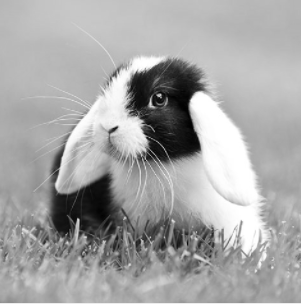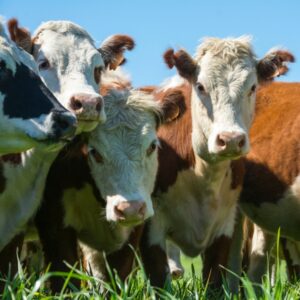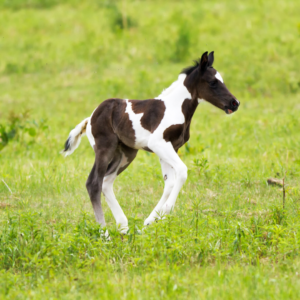 Prepare Your Rabbits for Changing Seasons: Temperature can have a profound effect on feed intake in rabbits.
Prepare Your Rabbits for Changing Seasons: Temperature can have a profound effect on feed intake in rabbits.
If your rabbits live outside or in non-environmentally controlled buildings, there are management steps you can take to keep them comfortable and healthy year-round.
Keeping rabbits cool in summer:
Rabbits are not good at all at dealing with hot weather, especially if it is humid. Hot, humid weather will severely limit the amount of food a rabbit eats. Digestion of fiber in the cecum of the rabbit produces considerable heat which the rabbit cannot adequately dissipate in hot weather, therefore it eats less. Rabbits cannot sweat and must dissipate heat through the millions of capillaries in their ears and if stressed enough via panting.
A rabbit will get accustomed somewhat to the heat and eventually eat more, however it will never eat as much when it is hot as it does when it is in a comfortable temperature zone. This means that it is very important to feed a high-quality feed that will continue to provide adequate nutrition, even when intake is reduced.
Does must eat considerably more when they are producing milk, because milk production takes a lot of energy. Hot weather can therefore affect the growth of the kits by reducing the amount of food the doe eats, thus decreasing the amount of milk she produces. The weaning weight of kits is typically less in the summer months, and this is true regardless of breed. The kits themselves will then gain less per day than when the temperature is cooler, meaning you will feed your rabbits longer to eventually obtain the desired weight.
To maintain adequate production during hot weather, do everything you can to keep your rabbits comfortable. Be sure they always have plenty of cool, fresh water to drink.
How to keep rabbits cool:
- Provide shade. Rabbits should never be forced to be in the hot sun.
- Orient hutches to capture breezes or use fans in the rabbitry.
- Fill freezer bags with ice (or freeze bottles of water) and place in the hutch. Rabbits will lay on these to cool down.
- Keep water clean, cool, fresh and plentiful.
- Feed a more nutrient-dense feed to ensure greater nutrient intake in a lesser feed amount.
Unless you have air-conditioned premises for your rabbits, the effects of excessive heat on your rabbits’ feed intake and production capabilities cannot be completely avoided. But if you follow these guidelines, your rabbits will be happier campers when the summer temperatures ratchet up.
Keeping rabbits warm in winter:
Rabbits are fairly well-adapted for dealing with the cold. However, they must eat more to meet the increased energy requirements for keeping warm. Therefore, the amount of feed provided during the winter months will need to be increased – maybe as much as three times. The additional feed is to account for the extra calories spent on maintenance of body temperature.
A little bit of long-stem grass hay will increase heat of fermentation in the cecum. Therefore, helping to keep the rabbit warm. Be sure that your rabbits can get out of cold winds and are protected from rain and snow. Extra bedding can also help to provide warmth. With good protection and adequate feed and fresh water, your rabbits will do very well in the winter months.
In conclusion, visit Kissimmee Valley Feed to shop our Rabbit Selection.
Sources:





 What is the new rule?
What is the new rule? Puppy Adoption Guide: Puppy adoption can be the best time of your life and certainly the best time (so far!) of your puppy’s life. But the process isn’t without stress. Questions and uncertainty abound, especially if this is your first time adopting a puppy. What kind of puppy food should you get? Is puppy food actually that different from adult dog food? When should puppy potty training happen, and how do you handle the inevitable messes? What about leash training and socialization? You’ll likely have dozens of questions about puppy adoption, which is why we’ve assembled a number of tips for puppy adoption to help you and your new pal get off on the right…paw.
Puppy Adoption Guide: Puppy adoption can be the best time of your life and certainly the best time (so far!) of your puppy’s life. But the process isn’t without stress. Questions and uncertainty abound, especially if this is your first time adopting a puppy. What kind of puppy food should you get? Is puppy food actually that different from adult dog food? When should puppy potty training happen, and how do you handle the inevitable messes? What about leash training and socialization? You’ll likely have dozens of questions about puppy adoption, which is why we’ve assembled a number of tips for puppy adoption to help you and your new pal get off on the right…paw. Signs of a Healthy Foal: Chances are your foal will sail through the baby stage with flying colors, especially if it’s normal at birth and good management practices are in place at your farm. However, even under the best circumstances, it’s possible that your youngster could fall prey to one or more problems that can affect foals. How does a healthy newborn foal appear?
Signs of a Healthy Foal: Chances are your foal will sail through the baby stage with flying colors, especially if it’s normal at birth and good management practices are in place at your farm. However, even under the best circumstances, it’s possible that your youngster could fall prey to one or more problems that can affect foals. How does a healthy newborn foal appear? Snuffle Mats for Dogs: Dogs love to sniff and explore the world around them. It’s super cute to look at them figuring stuff out! It can be great to encourage this behavior as it helps with their doggy senses. However, sniffing and foraging can cause some issues if they’re pawing at your garden or at your carpets inside. This is where snuffle mats for dogs come in. Read on to find out how they might benefit your dog!
Snuffle Mats for Dogs: Dogs love to sniff and explore the world around them. It’s super cute to look at them figuring stuff out! It can be great to encourage this behavior as it helps with their doggy senses. However, sniffing and foraging can cause some issues if they’re pawing at your garden or at your carpets inside. This is where snuffle mats for dogs come in. Read on to find out how they might benefit your dog!